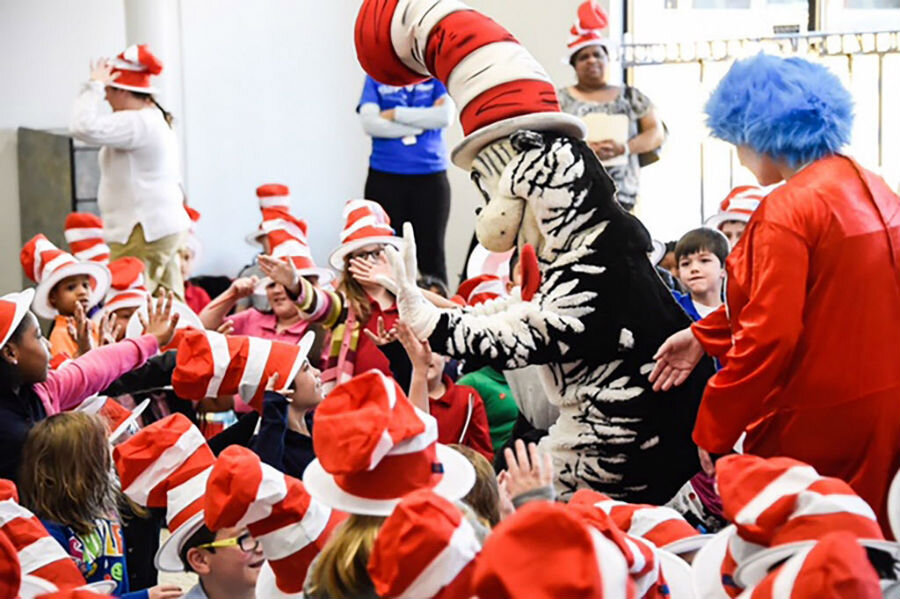How the Bank of England took a page from Dr. Seuss
Loading...
There are few topics as complex and often mind-numbing as those associated with money. Whether it's going through the terms of a personal loan or piecing together the intricacies of financial interactions between whole countries, the economy is one of the most important forces in people's lives – and one that can baffle even the most highly educated citizens.
That's why the Bank of England turned to an unusual source to figure out how to make its financial reports more comprehensible to the average reader: the works of famed children's author and illustrator Dr. Seuss.
At first glance, it's hard to see how the style of "Cat in the Hat" and "One Fish, Two Fish, Red Fish, Blue Fish" could be applied to the dense, technical language one would expect to see in reports from the central bank of the United Kingdom. Where Dr. Seuss had colorful characters and catchy rhyme schemes, the Bank of England has dry treatises on inflation without a single rhyme or clever turn of phrase in sight.
"Dr. Seuss was a genius at getting young children to read by using very simple language and very short words," said Dame Nemat Shafik, who was deputy governor of the bank until February of this year, according to The Telegraph. "And so we did a little research at the Bank of England on the linguistic complexity of our publications and found that our typical publications, like our inflation report, were only accessible to one in five people in the UK given the [average] literacy levels in the UK."
While a certain amount of technicality is to be expected from a financial report, the communications from the Bank of England had simply become far too dense to understand – even for those who work in the field of economics.
"I consider myself moderately financially literate, yet I confess to not being able to make the remotest sense of pensions," Andy Haldane, the bank's chief economist, admitted in a speech last year, according to The Telegraph. "Conversations with countless experts and independent financial advisers have confirmed for me only one thing – that they have no clue either. That is a desperately poor basis for sound financial planning."
In response to the growing problem, the bank embarked on a new program of simplification, using Dr. Seuss's simple, understandable prose as a model. Dr. Seuss, whose real name was Theodor Geisel, was known for creating enduring, memorable stories out of the simplest ingredients. "Green Eggs and Ham," for example, was the result of a $50 bet that Geisel would be unable to create a book using 50 words or less. He, of course, succeeded.
But despite the simplicity of Dr. Seuss's stories, they were not easy to write. Seuss's classic book "The Cat in the Hat" took nine months to compose, even though it used only 236 unique words from a list restricted to standard first-grade vocabulary words. A similar philosophy – putting in the extra effort on the part of the experts in order to be understood easily by average citizens – has already been put into action by the Bank of England.
But it will require eliminating some bad habits.
"Those writing in the financial industry tend to use long words," reads a blog post by Jonathan Fullwood, a staff member the Bank of England, from October 2016. "They put those long words in long sentences. And those long sentences in long paragraphs. The longest sentence we found in our sample of Bank of England documents contained 77 words."
While financial reports won't ever be as clear or as entertaining as Dr. Seuss stories, it is clear that work can – and should – be done to lessen the divide between financial institutions and the general public, or, at the very least, to keep a single sentence's word count to the lower side of double digits.
"I think most experts need to really challenge themselves because it's not about dumbing down," said Dr. Shafik. "As we often see in life, the people who really know their stuff can explain things clearly and simply in accessible language."








